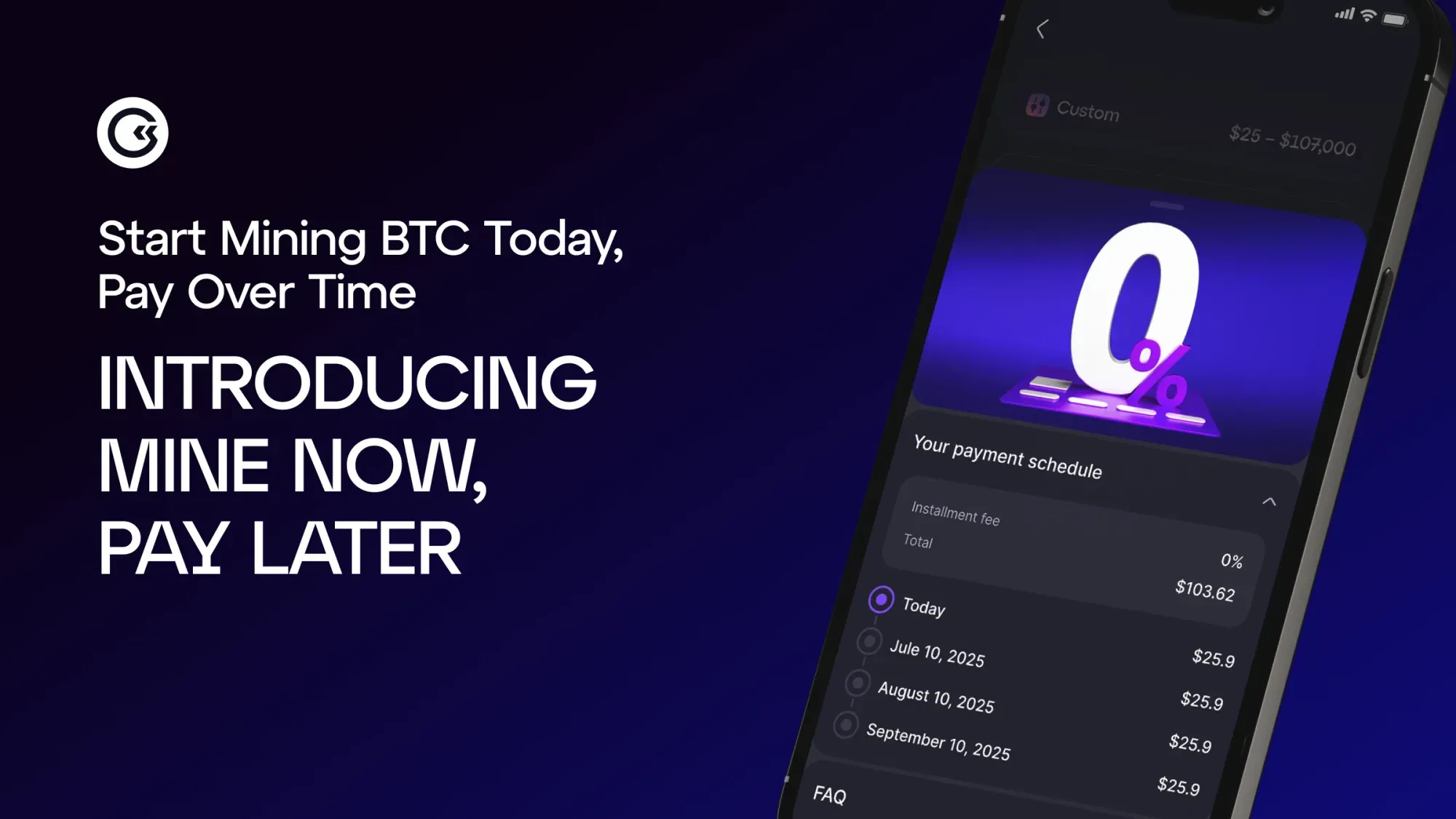Mining Bitcoin, or “extracting Bitcoin” sounds pretty exciting — picture yourself as part of a massive, worldwide network that helps keep the most famous cryptocurrency safe, all while earning some BTC rewards along the way. It’s like having your own digital treasure hunt, but instead of digging in the dirt, you’re running powerful machines solving puzzles nonstop. But before you jump in, there’s an important piece of the puzzle you shouldn’t skip: understanding the costs involved and how to keep those Bitcoin mining expenses under control.
How to reduce Bitcoin mining costs is a key question for anyone wanting to make mining profitable and sustainable.
Mining isn’t just about cool tech and shiny rewards — it comes with bills to pay and budgets to manage. If you don’t keep an eye on your spending, your dream of making profits could quickly turn into a pricey experiment. That’s why this guide is here: to help you get a handle on all the money side of extracting BTC and show you smart ways to save and stay profitable.
Here’s what we’re going to break down:
- Understanding Bitcoin Mining Costs — Controlling mining expenses requires a clear understanding of where your money is going, from hardware to electricity bills. We’ll look at the main things you’ll spend money on, like the rigs themselves, electricity (which tends to be the biggest ongoing expense), keeping your equipment cool, pool (liquidity fund) fees, and the software you need to get started.
- How to Optimize Energy Consumption — Since power bills can really stack up, you’ll learn how to pick energy-efficient hardware, why switching to renewable energy like solar or wind can save cash in the long run, and how to tune your machines so they’re running smoothly without wasting juice.
- Choosing the Right Mining Pool — Liquidity funds let you team up with other miners, sharing rewards and increasing your chances of receiving BTC. We’ll talk about what to look for in a pool — low fees, payout fairness, and location — so you get the best bang for your buck.
- Managing Hardware Costs — Should you buy your gear outright or lease it? How do you keep your machines humming along with regular maintenance? When’s the right time to upgrade? We’ll cover all that plus how to think about selling your equipment down the road.
- Using Crypto to Pay for Mining Expenses — Here’s a cool trick: you can use the BTC you mine to cover some of your outgoings, cutting down how much cash you need to spend. Plus, we’ll explain how stablecoins like USDT can protect you from crypto price swings when paying bills.
- Tracking Your Expenses with Mining Software — Keeping tabs on your operation’s outgoings and performance is key. We’ll introduce some handy software tools that make it easy to see how you’re doing and spot ways to improve.
- Tax Considerations for Bitcoin Miners — Last but not least, income means taxes. We’ll give you a simple overview of what to expect and why chatting with a crypto-savvy tax pro can save you headaches.
By the end of this guide, you’ll know how to control your BTC mining outgoings like a pro — using smart hardware choices, energy hacks, budgeting, and tracking tools — all so your BTC adventure stays profitable and way less stressful.
Ready to get started and take charge of your expenses? Let's get started.
Understanding Bitcoin Mining Costs

Mining BTC isn’t free — not by a long shot. There are quite a few outgoings that add up, and knowing exactly what you’re paying for is the first step to keeping your budget on track. Cost-effective Bitcoin mining requires balancing what you put upfront and ongoing expenses without compromising on mining power.
Key Expenses in Bitcoin Mining
Hardware costs: ASIC miners, GPUs, and maintenance
Your setup is the heart of the operation. Most serious BTC miners use ASICs (Application-Specific Integrated Circuit miners), which are built just for Bitcoin extraction and pack a powerful punch. They’re fast but come with a hefty price tag upfront. Some folks still use GPU rigs — which are more common for other cryptocurrencies — but these are usually less efficient for BTC. Besides the initial purchase, don’t forget about maintenance outgoings like cleaning dust out, fixing parts, or swapping components when things wear down.
Electricity costs: The largest ongoing expense for Bitcoin miners
Power is where the money really flows out. BTC mining machines run around the clock, chewing through massive amounts of electricity. The price you pay per kilowatt-hour can make a huge difference in your profits — and sometimes it’s the deal-breaker. This is why reducing electricity costs for Bitcoin mining is a top priority for miners everywhere.
Cooling and equipment maintenance
All that processing power generates serious heat. Keeping your machines cool with fans or specialized AC systems isn’t just about comfort — it’s essential to avoid overheating that could fry your gear. Cooling adds to your electric bill and maintenance outgoings, but it’s a must-have to keep things running smoothly and make your hardware last longer.
Pool fees (if mining in a pool)
Most miners don’t go it alone. Joining a liquidity fund means teaming up with others to boost your chances of earning BTC rewards more regularly. But these liquidity funds charge fees — usually a small cut of what you earn. These fees chip away at your profits, so choosing the right liquidity fund with reasonable expenses is important.
Software and firmware costs
Extracting BTC isn’t just about hardware; you also need software to connect your miners to the Bitcoin network or your chosen liquidity fund. Many programs are free, but sometimes you’ll want advanced software or firmware upgrades to squeeze extra performance out of your machines. Those can come with a price, adding to your outgoings.
How to Optimize Energy Consumption

Energy is often the biggest slice of your BTC outgoings. Optimizing consumption can drastically reduce your bills. Optimizing Bitcoin mining efficiency means selecting the right equipment and managing power use carefully to lower expenses without sacrificing performance.
Choose the Right Mining Hardware
Comparison between ASIC miners and GPU mining rigs
ASIC miners are purpose-built and far more efficient for Bitcoin than GPUs, which are general-purpose graphics processors. ASICs deliver higher hash rates (the speed at which miners solve BTC puzzles) with less power consumption, making them more cost-effective for BTC extraction. While GPUs can still be useful, especially for altcoins, they usually consume more energy relative to the work they perform in BTC mining.
The importance of selecting energy-efficient hardware to minimize power consumption
Not all ASICs are created equal. Newer models often consume less power per terahash of mining power. Purchasing the energy-efficient equipment helps lower operational outgoings and improves Bitcoin mining profitability over time.
Use Renewable Energy Sources
How renewable energy (solar, wind) can significantly reduce mining costs in the long term
Electricity bills are often the highest recurring expense. Switching to renewable sources like solar or wind can significantly lower this. Though initial setup outgoings for renewable energy infrastructure might be high, over the long run, they reduce dependency on grid electricity and stabilize power expenses — making your mining business more sustainable and cost-effective.
Case studies of mining farms that have adopted renewable energy solutions
Some large-scale farms in countries like Iceland and Canada use geothermal, hydro, or wind power, cutting their energy costs by a considerable margin. These success stories highlight how integrating renewables can optimize BTC mining efficiency and reduce environmental impact.
Reduce Idle Time and Optimize Mining Settings
How to avoid downtime and ensure that your mining equipment is working at full capacity
Idle miners are just wasting power and money. Regular monitoring ensures your machines operate around the clock. Quick detection of downtime or hardware faults means you can fix problems early, avoiding unnecessary electricity outgoings.
Tuning your mining hardware for maximum efficiency
Adjusting hardware settings like voltage and clock speeds, using software controls, can balance power use and output. Sometimes lowering power slightly reduces hash rate but boosts overall efficiency — a tradeoff that often increases profitability by lowering electricity consumption.
Choosing the Right Mining Pool

Pools are a great way to team up with other miners and boost your chances of earning BTC rewards. But not all of these liquidity reserves are created equal, and picking the right one can make a big difference when it comes to controlling your outgoings. Essentially, lowering Bitcoin mining operational costs is crucial for miners who want to stay competitive and profitable in today’s market.
What is a Mining Pool?
Think of a pool (liquidity reserve) as a group of miners pooling their computer power together to solve BTC’s puzzles faster. Instead of waiting ages to find a block on your own, you get steady, smaller payouts based on how much power you contribute. It’s a smart way to keep the rewards coming regularly, especially if you don’t have huge hardware setups.
Pool Fees
Pools usually charge a fee — often between 1% and 3% of your rewards. While that might sound small, these fees add up and can affect your overall BTC mining profitability, particularly if you’re running a large operation. Choosing the right liquidity reserve with lower fees helps you keep more of what you earn, which is a simple way to lower your Bitcoin operational expenses.
Selecting the Best Pool
Choosing the right one isn’t just about fees. Check out how they pay miners — some pools use Pay-Per-Share (PPS), others use Pay-Per-Last-N-Shares (PPLNS), and each has pros and cons. Also, look for a liquidity fund known for being reliable, so you don’t lose precious mining time due to downtime. Another smart move is to choose one that’s physically closer to you; shorter distances can mean faster communication and better performance.
Finally, some liquidity reserves offer handy tools to help you track your BTC mining outgoings and payouts — which makes managing your budget way easier.
Managing Hardware Costs

Mining gear is a big-ticket commitment, so handling those expenses smartly can really help you stay on top of your Bitcoin mining budget management.
Purchase vs Lease
When you buy your rigs outright, you face a hefty upfront price, but you own the machines completely. This can pay off if your hardware stays competitive and productive over time. On the flip side, leasing lets you get started with less cash upfront and gives more flexibility to switch gear as newer tech comes out. Just keep in mind leasing often ends up costing more in the long run and might limit how you can upgrade or tweak your setup.
Maintenance and Upgrades
Employing efficient Bitcoin mining techniques, such as choosing energy-saving devices and optimizing cooling systems, can significantly boost your profitability. Keeping your machines in tip-top shape is key. Simple things like cleaning dust off, swapping out worn fans, and updating firmware regularly help your miners run smoothly and avoid costly breakdowns. And don’t forget about upgrades: funding newer, more energy-efficient equipment can boost your efficiency and help lower ongoing operational expenses, which really adds up over time.
Resale Value
Hardware doesn’t hold its value forever. As technology advances, older ASIC miners lose their worth pretty fast. Being smart about when and how you sell your gear can help you recoup some cash, easing the bite of those initial hardware outgoings and keeping your overall Bitcoin mining hardware costs in check.
Use Crypto to Pay for Mining Expenses
Some miners use the BTC they earn to directly cover operational expenses, reducing reliance on cash payments.
Paying for Mining Costs with Bitcoin
Instead of converting mined BTC into cash, some operations use BTC to pay electricity bills, hardware, or services where vendors accept crypto payments. This can simplify cash flow management and hedge against fiat currency fluctuations.
Leveraging Stablecoins
Stablecoins like USDT allow miners to lock in fiat-equivalent values without selling Bitcoin, providing a stable means to cover outgoings amid BTC’s price swings. Using stablecoins can smooth out budgeting and reduce financial risk.
Track Your Expenses with Mining Software

Running a profitable BTC extraction operation means keeping a sharp eye on both your expenses and your rewards. Without tracking everything carefully, it’s easy to lose sight of how much you’re actually making — or spending.
Mining Management Tools
Thankfully, there are plenty of smart software options designed to help miners manage their rigs like pros. These tools gather data on your hardware’s performance, energy consumption, earnings from liquidity reserves, and all your outgoings — all in one handy dashboard. By giving you a clear picture of what’s going on, these programs make it easier to spot where you might be overspending on power or where your machines aren’t running as efficiently as they could.
Using mining management software is one of the most effective ways to optimize BTC mining efficiency and keep your budget in check. When you know exactly how each piece of your setup is performing, you can make targeted tweaks that boost profits and reduce waste.
Monitoring Profitability
Understanding your true returns isn’t just about looking at the price you paid for your mining hardware. You’ve got to factor in electricity bills, liquidity fund fees, regular maintenance expenses, and any other outgoings that pop up along the way. Mining software helps you track all of these variables over time, so you can see if your operation is genuinely profitable or if it’s time to change course.
Regularly monitoring profitability lets you make smarter decisions about scaling up your mining or adjusting your strategy — like switching between different liquidity funds, upgrading equipment, or cutting energy waste. In the fast-moving crypto world, staying informed with accurate data is your best tool to keep mining rewarding.
Tax Considerations for Bitcoin Miners
Extracting BTC isn’t just about machines and energy — it also comes with important tax responsibilities. Getting a handle on this early means fewer surprises down the road and helps you stay compliant with the law while keeping more of your earnings.
Tax Implications
In many places around the world, the Bitcoin you mine counts as taxable income right at the moment you receive it. That means the fair market value of your mined BTC on the day it hits your wallet is treated like regular income and might be subject to income tax. But it doesn’t stop there: if you later sell, trade, or use that BTC, you could owe capital gains tax on any increase in value since you mined it.
Because of this, keeping detailed records is absolutely crucial. You’ll want to track how much BTC you’ve mined, the exact date and market price when you received it, and any outgoings related to mining — like electricity, hardware, or pool fees. These records will help you calculate your taxable income properly and claim deductions where applicable, making your tax reporting more accurate and less stressful.
Consulting with a Tax Professional
Crypto tax rules can get complicated quickly. Different countries and even local authorities have their own regulations, and things change often. That’s why talking to a tax professional who knows the ins and outs of cryptocurrency is a smart move. They can help you understand what applies to your situation, find legal ways to optimize your tax bill, and make sure you avoid costly penalties.
Getting expert advice early means you’ll handle your BTC mining finances with confidence — so you can focus on what really matters: running a profitable and efficient mining operation.
Ready to start mining Bitcoin smarter?
Mining Bitcoin doesn’t have to be overwhelming or expensive. With the GoMining platform, you can dive into the crypto world confidently and efficiently. GoMining offers digital miners that come with guaranteed daily BTC rewards, so you know exactly what to expect without any hidden surprises. The platform features transparent expenses and an easy-to-use interface designed to help you keep your BTC outgoings under control right from the start.
If you’re just starting out or looking to optimize your existing setup, GoMining makes it simple to track your daily rewards, manage your energy consumption, and maximize profitability. Join thousands of miners already discovering how to reduce electricity expenses for BTC mining and boost their returns with smart, cost-effective techniques.
Ready to take the hassle out of mining and start receiving BTC rewards in a way that works for you? Head over to GoMining and begin your BTC journey today.
Conclusion
Controlling Bitcoin mining outgoings is vital to ensuring a profitable and sustainable venture in the crypto world. From understanding key expenses like hardware and electricity to optimizing energy consumption and selecting the right mining pools, every step counts.
Use energy-efficient miners, explore renewable power sources, minimize idle time, and keep a sharp eye on your budget with specialized software. Leverage Bitcoin and stablecoins to pay for expenses and always plan for tax compliance with professional help.
How to manage Bitcoin mining expenses effectively includes monitoring outgoings regularly and adapting your strategy based on market conditions. By mastering these cost-saving strategies, you’ll increase your Bitcoin mining profitability and make your operations smoother, more efficient, and ultimately more rewarding.
August 11, 2025











